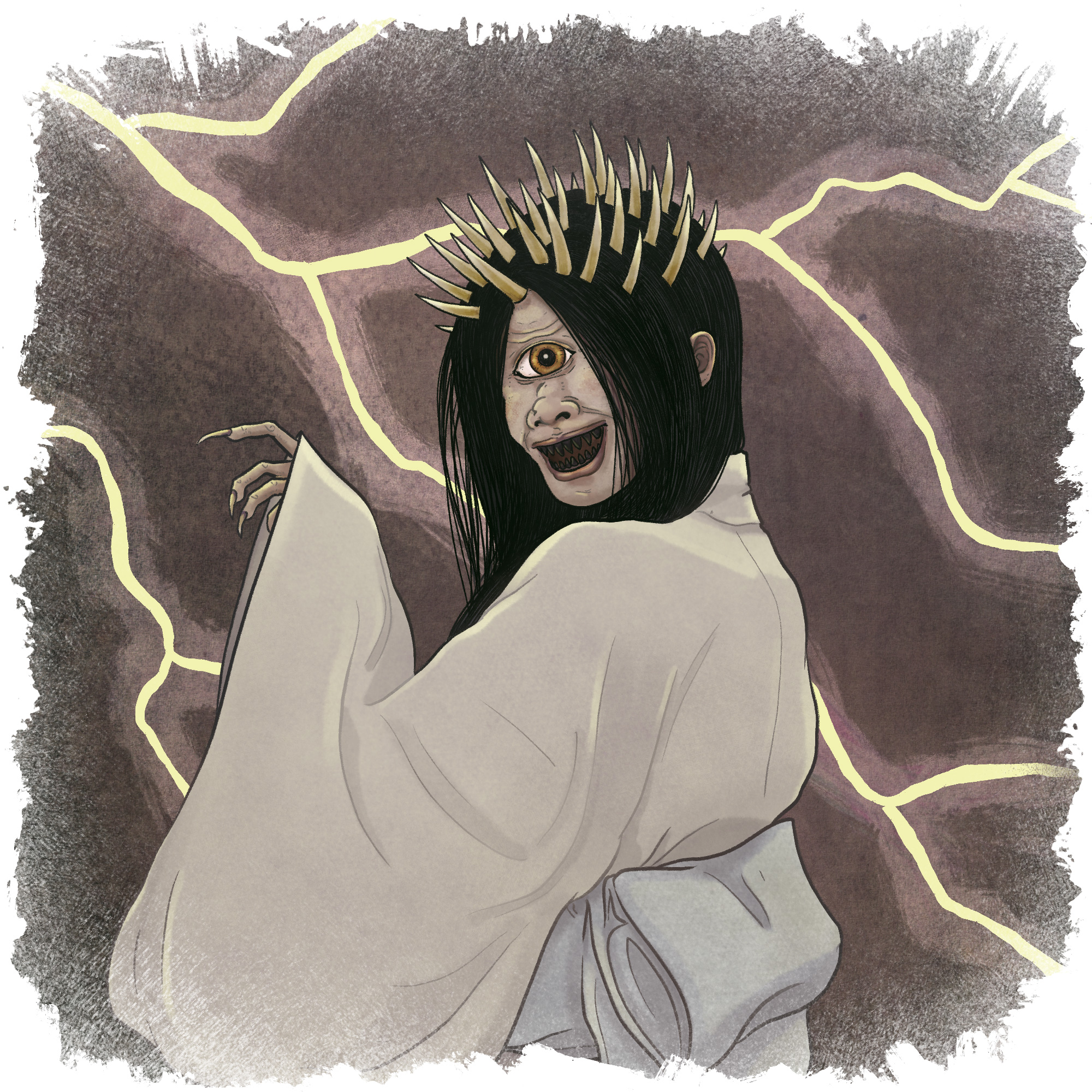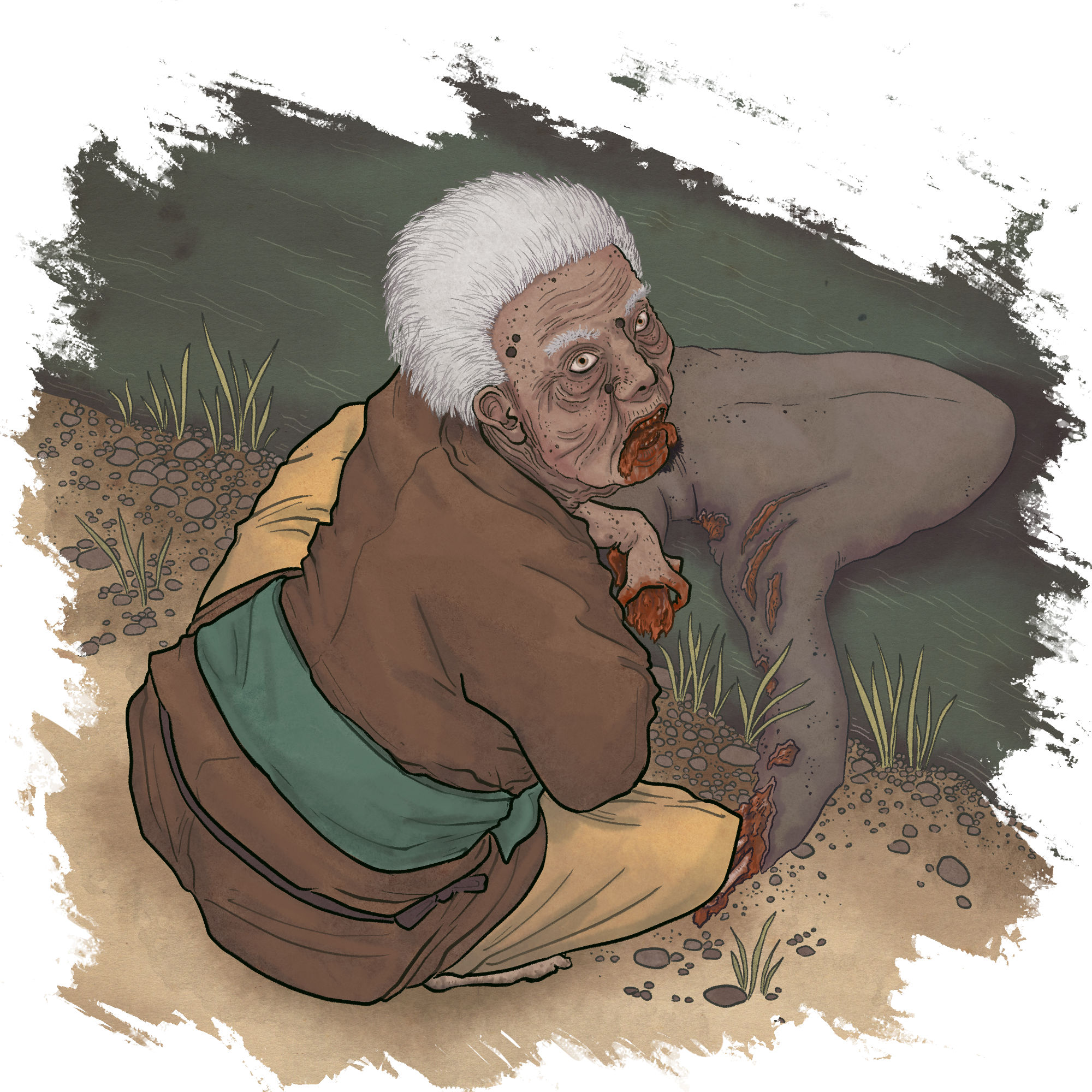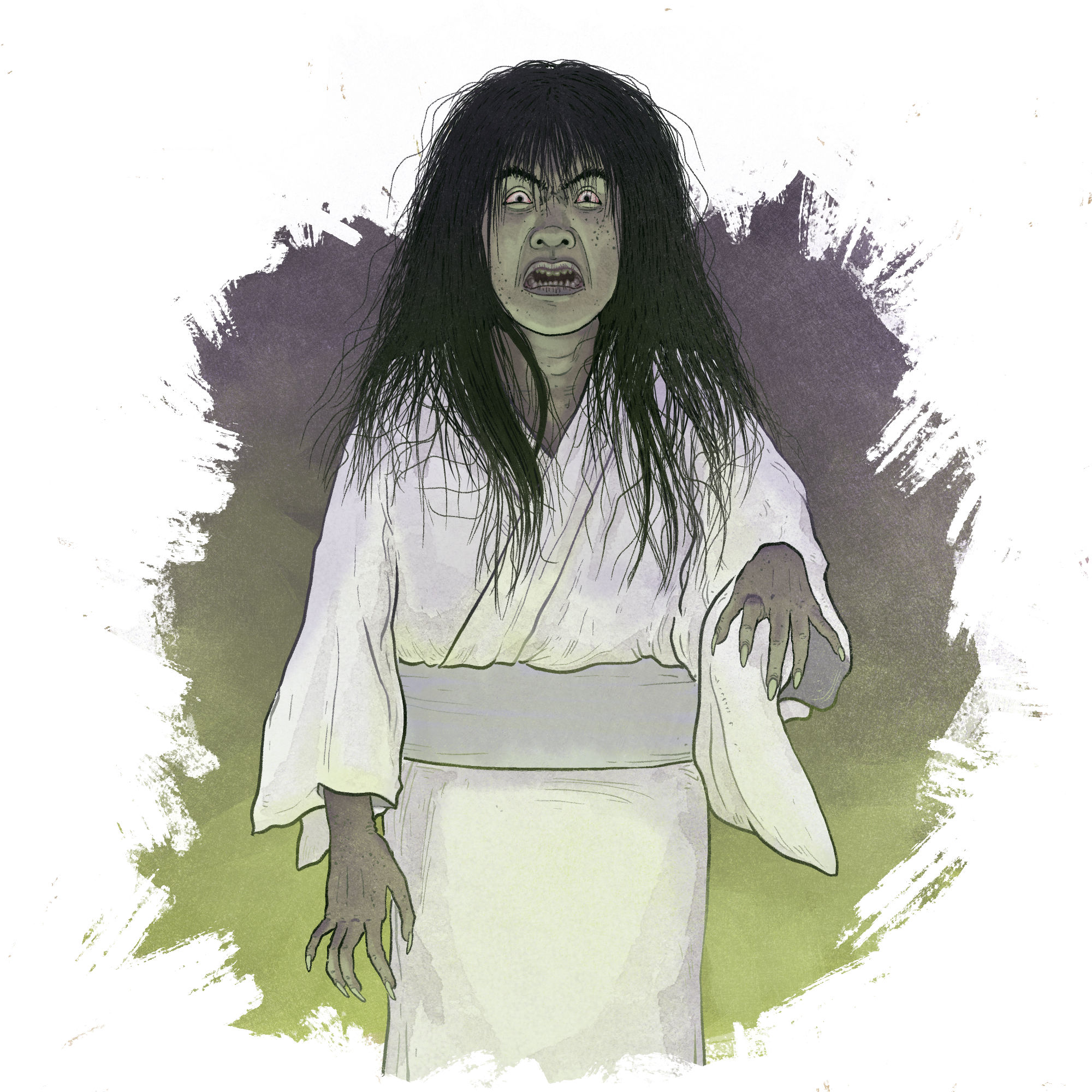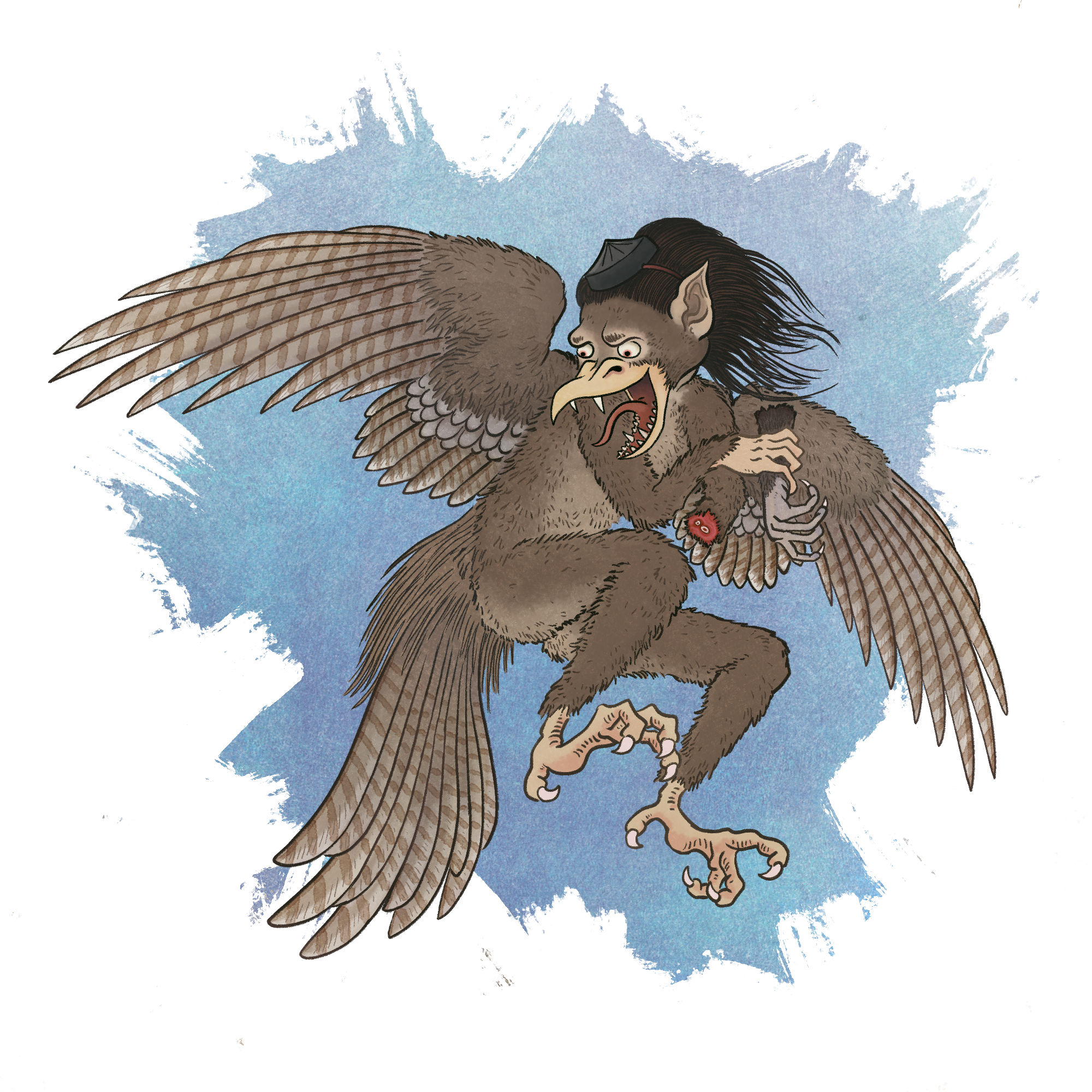Hello yokai lovers!
It’s that time of the year again: A-Yokai-A-Day is here! In celebration of Halloween season, every day this October I will post a translation and an illustration of a yokai story on this website & social media.
You can follow along by checking back every day for a new story & art, or participate along with me and many others by posting your own yokai-themed doodles, paintings, or anything on social media using the hashtags #ayokaiaday or #ayokaiaday2022.
This year, I am sharing stories from an Edo period book called Shokoku hyakumonogatari (“One Hundred Tales From Various Provinces”). This collection of spooky stories was compiled and published in 1677. It contains five volumes, each with 20 stories. The author and editor are unknown, but it was one of the forerunners of the ghost story boom that took place during the Edo period, and thus its influence can be seen in countless later works.
Perhaps because of its age, copies of this book are exceedingly rare. The only remaining full set containing all five volumes is owned by the Tokyo National Museum. Fortunately, they have graciously made scans of the book available online. You can see the original book here, including the original illustrations contained within!
All of the translations I share this month are my own. I don’t know of any English language translations of Shokoku hyakumonogatari, although I’m sure at least some of the individual stories have been translated before. Some of them appear in the articles on yokai.com as well, so you may be familiar with some of the stories I share this month. Hopefully, some, many, or even all of them will be new to you, and help you develop a deeper appreciation for Japanese folklore!
Note that I will not be translating the names of the monsters in these stories, for I believe they work better as loanwords. However I will do my best to explain unfamiliar terms found in each story.
Our first story deals with a henge (pronounced hen-geh). This is a generic term for monsters and doesn’t refer to a specific type of creature. Henge is written 変化, which literally translates to “change.” It frequently refers to a shape-changed tanuki, mujina, or kitsune, but can mean pretty much any ghost, spirit, or monster. These days, yōkai is the more common catch-all term for Japanese monsters, but before the 20th century, henge and mononoke were the main terms used for monsters in Japanese.
How Itagaki Saburō Was Killed by a Henge in Suruga Province
In Suruga Province there lived a man named Yoshimoto. One night, overcome with boredom, he gathered all of his family and servants together for a night of feasting and merrymaking. Then, he said, “Is there anyone amongst you who is willing to climb to the shrine on top of Mount Asama this night?”
Normally, there were many people who boasted about their bravery, but this was a place rumored to be inhabited by evil spirits. Thus, nobody readily stepped forward and volunteered to go.
There was one man, Itagaki no Saburō from Kai Province, whose family had a reputation for bravery and his skill with the bow and arrow going back several generations.
“I will go,” he said.
Yoshimoto was moved by this display of bravery that he immediately gave the warrior a token to use as proof of his visit. Itagaki, being a man of great courage, left for Asama without so much as another word.
It was mid-September. The full moon shone bright through the forest canopy. A strong wind howled, and the sound of the blowing leaves was dreadful. The mountain road was forlorn, but Itagaki passed through it and planted the token in front of the shrine at the top of the mountain.
As he was returning, a woman wrapped in a white traveling robe suddenly came out of nowhere. Itagaki thought this must be the henge who lived on Mount Asama, trying to test him. He ran towards the woman and tore away the white cloth covering her face. Underneath it was a single eye, and countless horns sticking out from beneath her parted hair. She wore light make up and her teeth were blacked. No words can describe how dreadful a sight she was, yet Itagaki was not scared.
“What are you?” he shouted, and put his hand on the sword at his waist. But the figure suddenly vanished.
Itagaki completed his journey and returned to Yoshimoto’s party.
“I have placed the token and returned, my lord,” he reported.
All of the men praised him, saying that only a man such as Itagaki could return safely from such a place.
“And did anything unusual happen to you?” they asked.
“No, nothing at all,” he replied.
Then, although the moon had been bright, suddenly the sky grew dark. It started to pour, and thunder roared. All of the men at the party including Yoshimoto turned white with fear. Then, from the sky, a hoarse voice shrieked:
“Itagaki! Tell them! Tell them!”
All of the men present cried to Itagaki: “If you saw something, you must tell Master Yoshimoto! Tell it exactly as it happened!”
Thinking he might lose his life if he did not speak the truth, Itagaki told the whole story of what had happened on Asama, leaving nothing out. However, the wind and rain did not let up, and lightning thunder continued to crash around them. No words can convey how terrible it truly was.
“If we don’t do something, Itagaki will not survive this!” the men cried. “Hurry, hide him in a trunk!”
The men shut Itagaki in a heavy wooden chest, then took up arms and stood watch over it.
Eventually the storm subsided, and morning came. The men decided to let Itagaki out, however when they opened the trunk, it was empty!
The men were terrified and asked each other and Yoshimoto what was going on.
Then, they heard a noise like two or three thousand voices bursting out in laughter. When they ran outside to investigate, Itagaki’s severed head fell from the sky. It rolled underneath the veranda, then disappeared forever.







